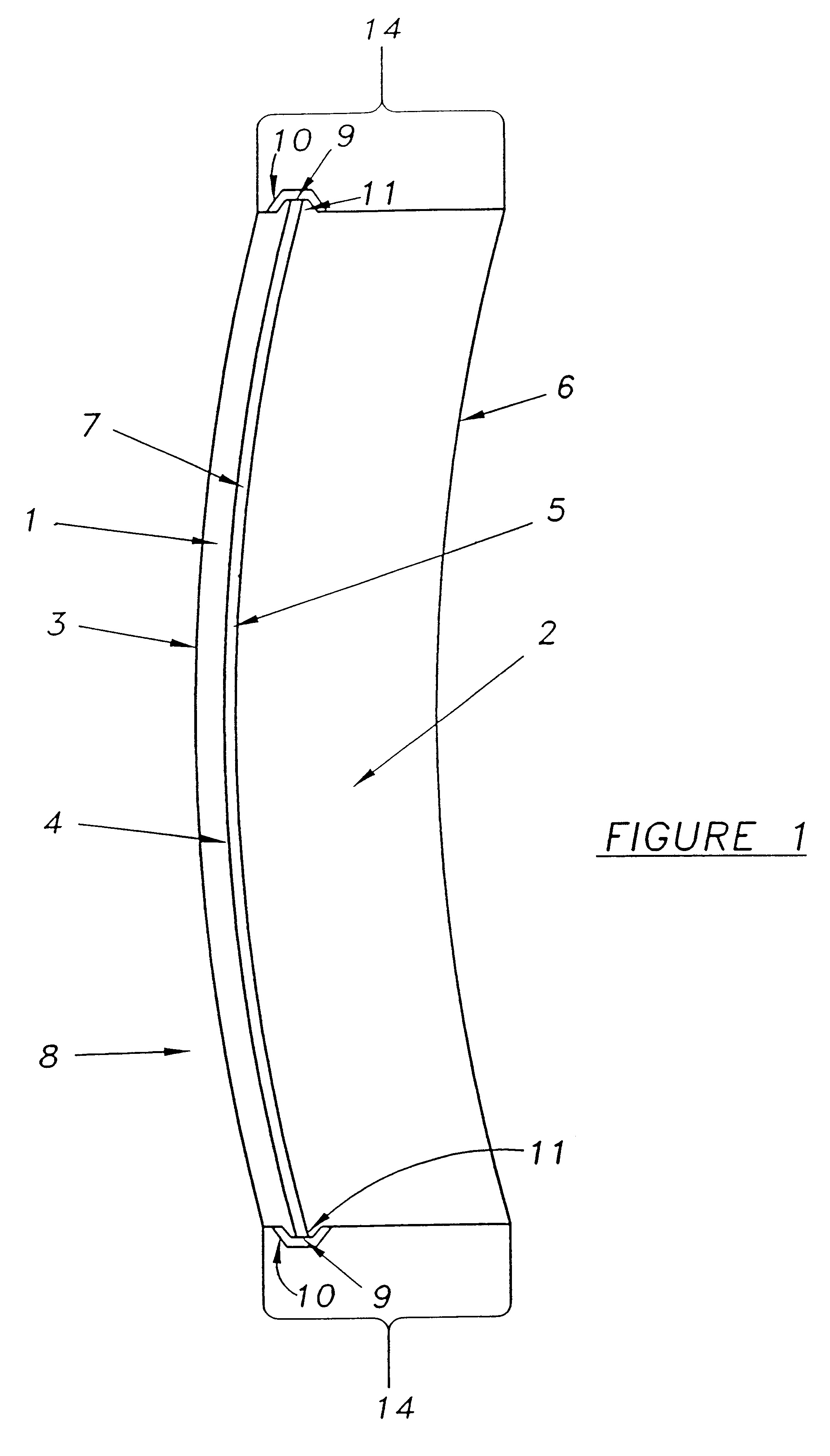Method for forming a molded edge seal
a technology of molded edges and seals, applied in non-linear optics, instruments, other domestic articles, etc., can solve the problems of affecting performance, affecting performance, and affecting the effect of abrasion
- Summary
- Abstract
- Description
- Claims
- Application Information
AI Technical Summary
Problems solved by technology
Method used
Image
Examples
Embodiment Construction
The present invention is more particularly described in the following Example, which is intended to be illustrative only since numerous modifications and variations therein will be apparent to those skilled in the art.
Sealing an Electrochromic Device
A laminated electrochromic device prepared substantially in accordance with Example I of U.S. Pat. No. 5,520,851 was inserted into a split mold in a manner that aligned the cavity of the mold with the ion-conducting polymer interlayer of the device. This split mold was fitted with a top plate having an extended surface that aligned with the pliable portion of the top half of the split mold. Pressure was applied to the pliable portions of the split mold by compressing the mold pneumatically against the top plate and a fixed platen. After application of vacuum to seal the bottom expanse surface of the device against the mold support ledge, Araldite.RTM. 2012 epoxy sealant was injected into the mold cavity via a needle that had been inserte...
PUM
| Property | Measurement | Unit |
|---|---|---|
| thickness | aaaaa | aaaaa |
| thickness | aaaaa | aaaaa |
| refractive index | aaaaa | aaaaa |
Abstract
Description
Claims
Application Information
 Login to View More
Login to View More - R&D
- Intellectual Property
- Life Sciences
- Materials
- Tech Scout
- Unparalleled Data Quality
- Higher Quality Content
- 60% Fewer Hallucinations
Browse by: Latest US Patents, China's latest patents, Technical Efficacy Thesaurus, Application Domain, Technology Topic, Popular Technical Reports.
© 2025 PatSnap. All rights reserved.Legal|Privacy policy|Modern Slavery Act Transparency Statement|Sitemap|About US| Contact US: help@patsnap.com



